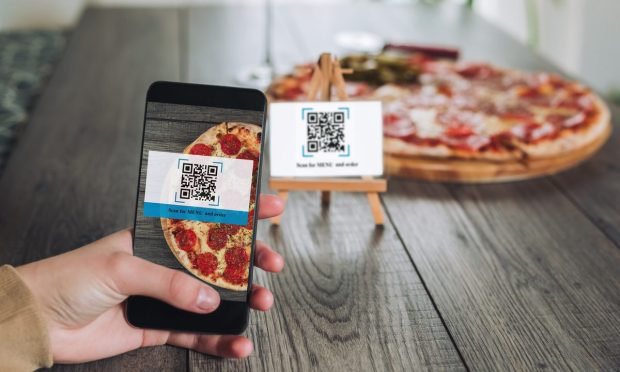DoorDash: Bbot Tech Brings Digital Convenience to On-Site Dining

After the first year of the pandemic sent digital off-premise orders skyrocketing, the vaccine rollout in 2021 and the consequent return of on-premise dining revealed to restaurants the need to bring this connected convenience into the in-store experience. Now, especially as staffing challenges force restaurants to look for low-labor alternatives to traditionally time- and work-intensive processes, many businesses are turning to digital self-service for on-site orders.
Against this backdrop of widespread demand for on-premise digitization, DoorDash DASH announced earlier this month that it is set to acquire contactless ordering and payment technology providers with an eye towards improving its in-store capabilities.
You may also like: DoorDash Aims to Capture in-Store Restaurant Sales With Bbot Acquisition
“The in-store ordering software space is fairly fragmented. Vendors tend to focus on one subset of the problem – at-table QR code ordering, serving as a full POS or serving only enterprise merchants or small and medium-size businesses,” Tom Pickett, chief revenue officer at DoorDash, told PYMNTS in an interview. “Bbot understands not only the software, but also in-store onboarding, implementation, and deployment … With Bbot, we’re able to offer immediate value to merchants while integrating with their existing software.”
According to data from the 2022 edition of PYMNTS’ Restaurant Friction Index, created in collaboration with Paytronix, which drew from a survey of more than 500 restaurant managers, 41% of restaurants’ sales now come through digital channels, while 32% of sales are made at the restaurant.
Related news: New Data Show Digital Loyalty Programs Are Key Differentiator For Top-Performing Restaurants
Seamless Integration
Pickett noted that the company “already partner[s] with a number of point of sale solutions that power in-store dining” and that the Bbot acquisition allows DoorDash to go further with those partnerships, “enabling merchants more opportunities for integration.”
The DoorDash for Merchants site touts 24 point of sale (POS) systems with which the aggregator integrates including those of Square and Toast.
Indeed, as restaurants struggle with orders coming in through a range of disparate digital channels, technology providers are racing to offer the most integrated system. For instance, in the fall, Yelp announced the launch of its Yelp Guest Manager, integrated with a range of leading POS and ordering systems, and food ordering platform ChowNow announced its “Order Better Network,” which also integrates with popular POS systems, and ordering sites.
Read more: With ‘Guest Manager,’ Yelp Joins Tech Providers Aiming to Be Restaurants’ One-Stop Shop
ChowNow Joins Tech Providers Aiming to Alleviate Restaurants’ Digital Growing Pains
“Table stakes are fully integrating with all the different point-of-sale systems. The [next] frontier would be embedding this into different experiences seamlessly,” Bbot CEO Steve Simoni told PYMNTS in a November interview.
More details: Growth of Ghost Kitchens Threatened by Outdated Digital Payment Tech
In-Store Convenience
Pickett said the acquisition complements the company’s white-label ordering and fulfillment products for restaurants such as Drive, its solution that makes DoorDash drivers available to fulfill orders through restaurants’ direct channels, and Storefront, its online ordering system that restaurants can build into their websites.
“Bbot augments this offering with in-store digital ordering, bringing more flexibility, efficiency and convenience to the in-store experience,” Pickett said.
DoorDash and Bbot are far from the only companies looking to step up their pay-at-table features. Across the industry, restaurant brands and providers alike are noting the possibilities of these labor-saving capabilities.
“One of the leading things that we’re seeing right now in restaurant tech is actually in the payment space, and it’s the growing demand for pay-at-table,” Peter Dougherty, general manager of Hospitality at Canada-based tech company Lightspeed Commerce, told PYMNTS in a January interview. “It’s something we’ve seen in Europe and Canada for many years, actually, and … we’re seeing that happening now in the U.S.”
See also: End-to-End Payment Digitization Empowers Restaurants to Take on Labor, Supply Chain Challenges
Additionally, the Restaurant Friction Index’s survey of a census-balanced panel of over 2,100 United States adults found that 23% of restaurant customers say they would be more inclined to shop with restaurants that offered self-service kiosks, and 19% say the same of the ability to pay with QR codes.
Quick and Easy
Discussing how he expects consumer ordering behavior to evolve in the next twelve months, Pickett said, “As the dining landscape continues to evolve, it’s clear that customers aren’t changing their value of convenience.”
Certainly, convenience is at the core of DoorDash’s value proposition. The Restaurant Friction Index’s consumer survey noted that, of the 42% of restaurant customers who order via third-party aggregator, 63% say they do so because it is easy and convenient, making this factor the top motivator. Indeed, convenience ranks well ahead second-most common reason for using aggregators, that they are sometimes the only way consumers can get food delivered from their restaurant of choice, which motivates 38% of aggregator users.
“COVID-19 … exemplified customer preferences for convenient, quick, and accessible ordering at home and on-premise,” Pickett said. “Having the ability to order and pay at your convenience, in collaboration with wait staff, is a trend we expect to accelerate.”
